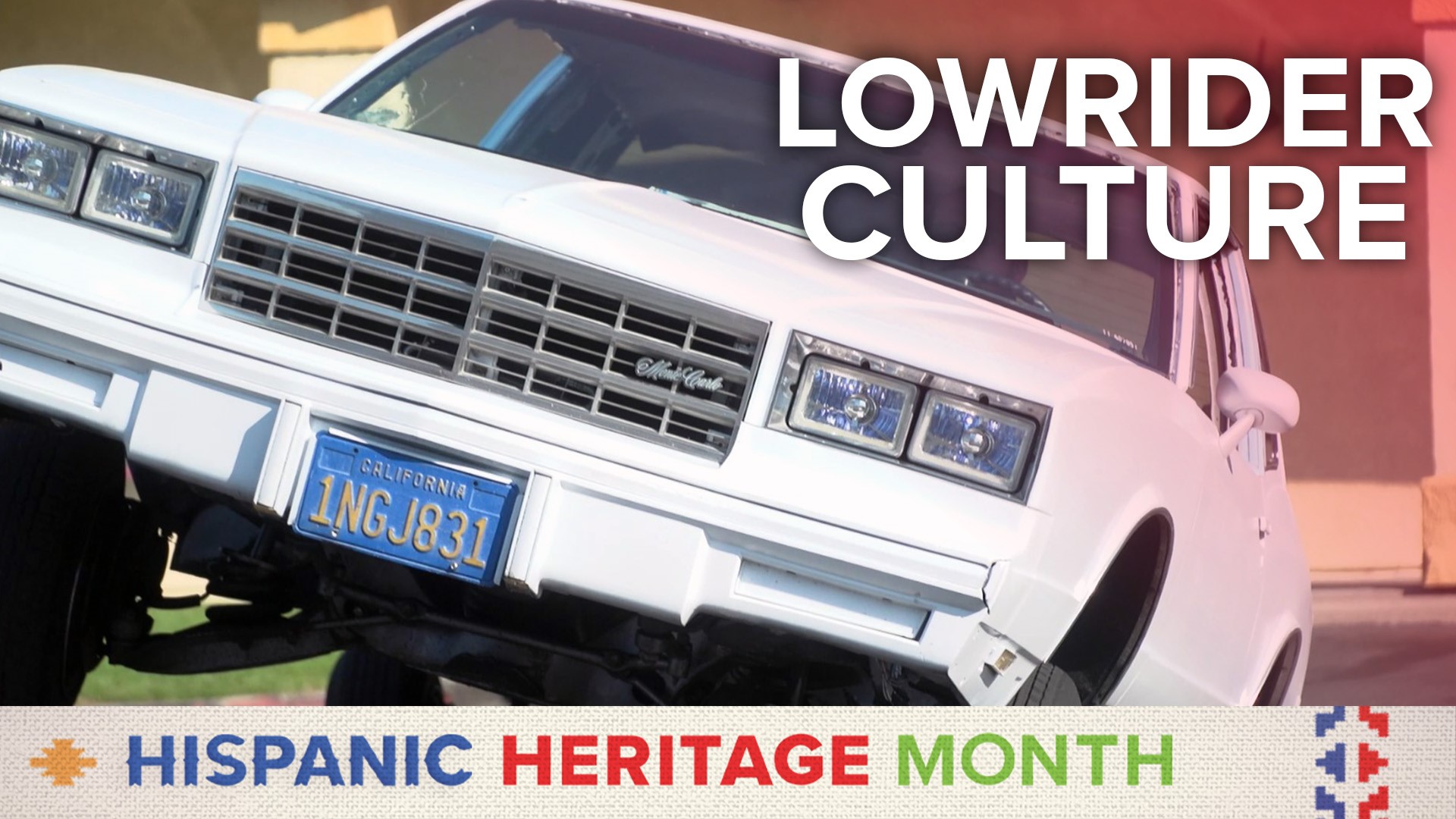CALIFORNIA, USA — The fight to legalize lowrider cruising in California is one step away from becoming a reality. Assembly Bill 436 is waiting on Governor Gavin Newsom's signature. If signed, it would be a victory for many Chicanos that want to reclaim part of their culture and heritage that have been suppressed for decades.
"I bought this car for my wife. So my wife, she likes jewelry and bling. So that's why (it has) the gold in the chrome engraving," said Chito Mirelas.
A 1965 Chevy Impala is a labor of love for Mirelas, and for many lowrider owners, fixing and making additions to the car is a never ending process.
"Every lowrider you see out there, they're all different. It's the way we express ourselves from our paint jobs, to our wheels, to the engraving on the cars, the interiors," he said.
Tinkering with cars has been a lifelong passion for Mirelas.
"My dad has had lowriders his whole life. He cruised in San Jose, back in the '70s with my uncle. He's always worked on classic cars," he said.
Since the 1980s, state vehicle code has allowed cities across California to stop drivers from cruising and driving cars modified to be a certain height. Cities like Sacramento, Modesto and San Jose recently lifted the decades-old ban.
"I was happy they lifted the ban because lifting the ban just unifies everybody — lowriders, hot rods, I mean, C10 trucks, everybody just unifies. Everybody go out there, cruise, enjoy it," said Mirelas.
For Tina Perez-Tateo, her love for lowriders started with her late brother.
"That's how I feel here in my gut, because of my brother and my husband, building me a car like his... to take that burden off my shoulders, because I wanted to do something for him in his memory," she said.
Aside from dedicating her car after her brother, Perez-Tateo felt drawn to make some changes in her Modesto community. She's a part of Cruising Culture of Modesto, a group that fought to legalize cruising and succeeded this past July.
"We had to prove to them that it could work. But we got really lucky because a lot of people on the city council are car people," said Perez-Tateo.
Cruising across the state could soon be possible with AB 436 removing the ban statewide. For both Perez-Tateo and Mirelas, the concerns for banning it in the first place should no longer be an issue today.
"It's a whole different time now. You know, time to change, people have grown up," said Mirelas.
GET MORE RACE & CULTURE FROM ABC10:
►Explore the Race & Culture home page
►Watch Race & Culture videos on YouTube
►Subscribe to the Race and Culture newsletter
The roots of lowriding can be traced back to the 1940s when car culture was taking off after WWII, when veterans were purchasing cars with the money earned from their service.
"That's our culture. You know, it goes back to when the GI's came back from WWII," said Perez-Tateo.
By the 1970s, lowriders took a more formalized political function with the Chicano Movement and the fight for equality. In the 1980s, cruising was associated with gang culture, creating a stigma for everyone who was into lowriders and cruising. Now, Perez-Tateo says things have changed for the better.
"We're different people now. We're 30 years older now. We have children. We have grandchildren, and we want them to cruise with us," she said.
Perez-Tateo says her love for cruising also came from her dad, a war veteran. She says it gave him something to look forward to after coming home from WWII.
"They came back and they thought of, 'Hey, I want to do this car like this. And I'm gonna put sandbags in the trunk to lower it,' because none of this hydraulic stuff we had back then," she said.
Perez-Tateo also hopes to help remove the stigma that this car culture is only for Hispanic men.
"They want to move from the passenger side to the driver's side now and to be a role model for the younger generation," she said.
Assemblymember David Alvarez (D-Chula Vista) introduced AB 436.
"Lowriding and cruising is part of culture, it's part of a lot of our communities throughout the state, and it shouldn't be something that gets penalized," said Alvarez.
"Local government also needs to have the ability to make sure that people are safe. And when we had problems, we had to stop the cruising," said Senator Anna Caballero (D-Merced). "I think we should, so I respectfully ask for a no vote."
Most cruising events now happen during the day. Lifting the ban would allow more people to come together to reclaim their identity and culture and address some of the safety concerns.
"Unity, I mean, it just brings unity not just in our community but amongst the state," said Mirelas.
It also means to inspire a new wave of car enthusiasts.
"I hope they pick up a trade, doing mechanics, painting, upholstery, bodywork. It's out there for them to do you know, so we hope to keep that alive also," said Perez-Tateo.
The governor has until Oct. 14 to sign or veto the bill.
We want to hear from you!
The Race and Culture team's mission is to serve our diverse communities through authentic representation, community engagement and equitable reporting. Accomplishing our goals of inclusive reporting requires hearing from you. Is there a person or place that you want us to highlight? Email us at raceandculture@abc10.com or fill out the form below.
Watch more Hispanic Heritage Month stories from ABC10: Woodland artist empowering youth through art healing program

